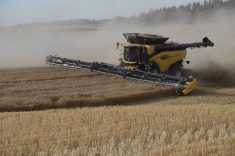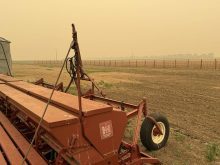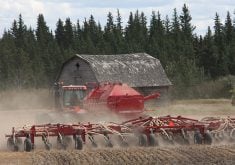More special crops have been shipped through the St. Lawrence Seaway system since harvest than a year ago, but producers are annoyed more didn’t make it.
The situation has been better for wheat and barley, which haven’t been stuck in the same logjam as special crops. As well, canola hardly notices the eastern shipping channel because most exported canola leaves the country through the West Coast.
The seaway system, from Thunder Bay to the Atlantic Ocean, shut down at the end of December for the usual winter freeze-up. Any grain now shipped east will have to go by rail to eastern seaports until late March, when the seaway typically re-opens.
Read Also

Saskatchewan puts crown land auction on hold
Auctions of Saskatchewan crown lease land are once again on hold.
“There’s a lot more demand than what we’re physically moving this year,” said Francois Catellier, executive director of the Canadian Special Crops Association.
“You’re seeing more competition for movement and that’s probably why we’re hearing it’s getting difficult to arrange for transportation.”
Shipments of peas, lentils and mustard were up about 12 percent since harvest compared to the same time last year, Catellier said, but could have been greater if more rail transportation was available.
The Canadian Wheat Board considers the full March to December seaway season to have been “a very good year,” although uneventful, said eastern logistics organizer Sharon Meikle.
Since March, small ships called lakers have moved about three million tonnes of board grains through the Great Lakes system from Thunder Bay to East Coast ports, where the grain was transferred to larger ocean-going vessels. This is about the yearly average.
Direct export shipments from Thunder Bay, which are not transferred to other ships, fell to about 361,000 tonnes from more than 800,000 tonnes the year before. Meikle said direct export shipments often leap or fall by about 500,000 tonnes because they are dependent upon how much grain is shipped by rail to port and how many steel ships use the system.
About 600,000 tonnes of board grains were shipped by laker through the Great Lakes to eastern millers, which is up 100,000 tonnes from the previous year but similar to two years ago.
Meikle said winter rail shipments to eastern ports will probably reach 750,000 tonnes, well up from last year’s 575,000 tonnes but far below 2003-04’s 1.1 million tonnes.
Overall the seaway’s volume of ships rose about seven percent in 2005 from 2004 and its volume of cargo rose two percent. Its main cargoes are grain, coal and iron ore.

















